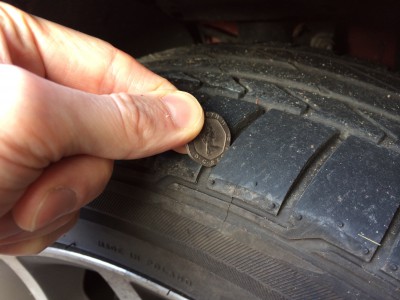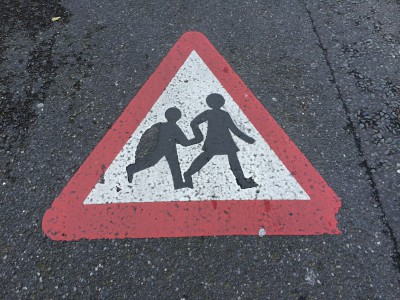Tyre safety, staying awake, the morning after, need for speed and competition time
As part of our efforts to promote national road safety charity Brake’s Road Safety Week November 17th-23rd here at Plan Insurance we’ve created a series of guides on crucial aspects of road safety. In this post we’ll be taking a look at road safety tips for drivers that include; tyre safety, how to stay awake at the wheel, checking your alcohol levels the morning after a night out and addressing your need for speed via a competition.
Tyre safety advice
Your tyres’ condition is critical for acceleration, braking, steering and cornering and as the driver; you are responsible for making sure tyres are legal and roadworthy.
Related article: Can A DWI Be Reduced In New York?
Here are 5 Tips to help keep your vehicle safe and you on the right side of the law;
- 1. Check you tread depth – Anything under 3mm can compromise performance and safety. Check Tread depth on all four tyres in various points along the tyre and the inner, outer and centre using a tread gauge or the built in tread wear indicator. The legal limit of minimum tread is 1.6mm. See our handy 20p Test further on in this blog.
- 2. Check your pressure – Having the correct inflation pressure is essential; tyres naturally lose pressure over times so it is important to refill them regularly
- 3. Check for damage – Give your tyres a close inspection for cuts and cracks, which can lead to slow punctures or cause the steel wires in the tyre to rust.
- 4. Don’t overload your vehicle– Overloading has the same effect on tyres as under-inflation, causing premature tread wear and in extreme cases a sudden blowout.
- 5. Take extra caution in wet conditions – You are twice as likely to have an accident in wet weather as in the dry. The stopping distance of a tyres with 1.6mm of tread in double that of a new tyre with 8mm.
Tread depth
A quick and easy way to see if your tyre tread exceeds the minimum legal tread depth, as used by many road based professionals, is to take the 20p test.
Simply place a 20p coin into the main tread grooves of your tyre. If the outer band of the 20p coin is obscured when it is inserted, then your tread is above the legal limit.
If the outer band of the coin is visible, then your tyres may be illegal and unsafe and should be checked immediately by a qualified tyre professional. If the outer band of the coin is visible, then your tyres may be illegal and unsafe and should be checked immediately by a qualified tyre professional.
When you perform the test, remember to check at least three locations around each tyre. As the test is so quick and easy, stay safe by checking your tyres at least once a month.
Failure to comply with the legal minimum standards can result to fines of up to £2500 and 3 penalty points for each illegal tyre. UK law requires car tyres to have a minimum of 1.6 of tread across the central three quarters of the tyre around its entire circumference.
Staying awake at the wheel
Driving tired is lethal. Research found that a quarter of all crashes on British roads involving death or serious injury were sleep related. Dozing at the wheel, even for a split second can result in catastrophic accidents. You don’t even actually need to fall asleep to put yourself and others at risk: tiredness delays reaction times and affects your ability to concentrate. Here are some simple steps all drivers including road based business professionals and fleet operators can take to avoid fatigue.
Plan driving breaks– if you have to drive long distances. Plan ahead so you are well-rested before long drives and never embark on a journey when you’re already feeling tired. If you know you have to drive the next day, especially a longer journey, make sure you get a good night’s sleep. The less sleep you get the less chance you have of staying awake. When planning a long journey, allow time for regular breaks – at least 15 minutes every two hours – and make sure you stop as soon as possible if you start to feel tired.
If you’re driving somewhere relatively far away and coming back again, book an overnight stay in the middle if you can and ensure you’re well rested before heading home. Avoid driving at times of day when you’re most susceptible to tiredness, like at night, in the evening after a long day, or in the mid-afternoon, when most people experience a ‘dip’.
Professional drivers who are on the road for long stretches at a time for work purposes such as taxi drivers, chauffeurs and motor traders should consider having time in their schedule for regular break periods to rest . 15 minutes every two hours is safest. If you drive a truck or bus, be aware of legislation covering the hours you are allowed to drive, and make sure you take the required rest breaks. Even if you fall behind schedule or get caught in traffic, always take your breaks. Safety comes before deadlines.
If you feel tired at the wheel you need to listen to the warning signs straight away and pull over somewhere safe as soon as you possibly can. Winding down the window or turning up your music does not help you to stay awake. If you ever head nod, you have already been asleep briefly, although you may not remember it, and these ‘micro sleeps’ are enough to cause a devastating crash.
Have a caffeinated drink such as an energy drink which generally has a higher dosage of caffeine than coffee, followed by a 15 minute power nap can temporarily hold off tiredness. Open the window and get some fresh air. Remember though that these are only temporary aids.
If you are still feeling tired after your nap, or you still have a long way to go, you need to stop and get a proper night’s sleep, which is the only solution to tiredness. Whatever you do, only continue your journey when you’re feeling fully refreshed.
The morning after the night before
Make sure you’ve completely got rid of any alcohol from your system before driving. Many drink drivers are caught the next day. Drinking coffee, sleeping, or having a shower won’t help you sober up, only time.
There’s no way of knowing exactly how long it takes to sober up completely after drinking, but it’s longer than many people think. As a rough guide drivers should allow at least one hour to absorb alcohol, plus at least one hour for each unit consumed – but it can take longer, so it’s wise to leave extra time to be safe.
How long it takes for alcohol to leave your system varies depending on lots of factors, including:
- Gender – men tend to process alcohol faster than women
- Dehydration – if you haven’t drunk enough fluids alcohol will stay in your system for longer
- Mixers – mixing drinks with water and juice means you absorb alcohol slower, fizzy mixers mean you absorb alcohol faster than with no mixers
- Tiredness – when you’re tired your liver becomes less efficient, processing alcohol more slowly so it stays in your system for longer
Speeding on the roads kills
Driving slowly is one of the most important things drivers can do to protect themselves and others. That means staying well within limits, slowing down around homes, schools and shops, slowing right down for bends, brows and bad weather, and avoiding overtaking.
Slowing down helps make our roads and communities safer, greener, and more pleasant and can mean the difference between life and death in an emergency.
Limits Stay well under limits, rather than hovering around them. Look out for signs, including temporary limits, and obey them, regularly glancing at your speedometer. Know which limits are usually in place on different roads and if unsure, err on the side of caution and slow down. It will help you stay safe and avoid fines and penalty points.
Space Keep at least a two-second gap and four in the wet behind the vehicle in front on any road, but especially at higher speeds – it’s your braking space in a crisis.
Excuses Excuses. Some drivers use all sorts of excuses for speeding: they don’t notice their speed creeping up; they feel pressured by other drivers, they’re in a rush, or think they can handle it because of their fast reaction times and good brakes. Studies have proven the link between speed and safety: reducing average speeds leads to fewer crashes and casualties, and if you speed, you’re far more likely to crash.

Have a need for speed? – This competition has no longer open.
We hope you have read and digested our road safety tips for drivers. Plan Insurance, specialists in broking insurance for professional motor based businesses are offering a fantastic track day driving experience to one lucky winner.
The competitions is in support of BRAKE the road safety charity who are running a National Road Safety Week between November 17th-23rd. The campaign aims to highlight the part we can all play in making roads safer in order to avoid tragedies.
If you’re a motor sport enthusiast make sure you release your need for speed in the appropriate surrounds of a race track. Our competition offers you the perfect day at a choice of top nationwide venues. Simply click here and submit your details to enter before midnight on November 26th.
Enter Competition Here – This competition has no longer open.




